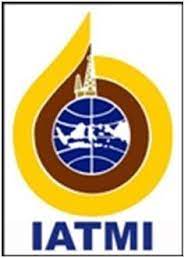Potensi Cadangan Panas Bumi dengan Metoda Volumetrik Pada Sumur Saka-1 Lapangan Panas Bumi “X” Kabupaten Lembata NusaTenggara Timur
(1) Petroleum Engineering, Universitas Proklamasi 45 Yogyakarta
(2) Petroleum Engineering, Universitas Proklamasi 45 Yogyakarta
(*) Corresponding Author
Abstract
Secara geologi Indonesia berada di zona Sabuk Api atau busur vulkanik yang merupakan produk konvergensi berupa subduksi antara lempeng Samudra Hindia-Australia dengan lempeng benua Asia berdasarkan konsep Tektonik lempeng. Potensi Panas bumi Indonesia tercatat sebagai yang terbesar ketiga di dunia dengan potensi cadangan 40%, Direktorat Inventarisasi Sumber Daya Mineral (ESDM) mengidentifikasi 256 daerah panas bumi dengan total potensi mencapai atau sekira 28.617 MW Penggunaan potensi panas bumi Indonesia hingga Tahun 2016 baru mencapai 4% atau sekira 1341 MW sehingga masih perlu ditingkatkan. Target pemerintah tentang kebijakan Energi Nasional terkait penggunaan energi terbarukan sebesar 25% pada tahun 2015, memicu peningkatan kegiatan pencarian dan eksplorasi panas bumi.Penyelidikan Direktorat Inventarisasi ESDM (2006) di Kabupaten Lembata, Nusa Tenggara Timur mencatat tiga lapangan potensi panas bumi yakni : Atadei, Roma dan Adum. Sumber panas bumi umumnya berasosiasi dengan gunungapi menjelang padam maupun masih aktif. Syarat terbentuknya panas bumi adalah adanya sumber panas (magma), batuan reservoir, batuan penudung dan akuifer. Hasil inventarisasi dan eksplorasi. Tulisan ini difokuskan pada perhitungan cadangan yakni energi panas bumi yang kenyataannya dapat diambil dan potensi listrik yang dapat dibangkitkan pada lapangan panas bumi X Kabupaten Lembata, Nusa Tenggara Timur. Tahapan awal dari upaya untuk mengetahui potensi energi panas bumi dimulai dari eksplorasi terencana dan terpadu yang meliputi kegiatan survey geologi, geokimia, geofisika, landaian suhu dan pemboran uji/eksplorasi panas bumi yang diakhiri dengan kegiatan pemboran sumur produksi serta pembangkit power plant untuk listrik jika hasil pemboran uji memberikan gambaran yang positif serta faktor kebutuhan akan energi/listrik.Cadangan energi panas bumi yang kenyataannya dapat diambil di Lapangan panas bumi X adalah 3,94 x 10 11 KJ dan besarnya potensi listrik yang dapat dibangkitkan adalah sebesar 41 Mwe Sehingga Lapangan panas bumi X prospek dan layak untuk dikembangkan sebagai Pembangkit Listrik Tenaga Panas Bumi (PLTP), sehingga kebutuhan listrik masyarakat Kabupaten Lembata sebesar 5 Mwe dapat terpenuhi.
Geologically, Indonesia is in the zone of ring of Fire or volcanic arc which is a product of convergence in the form of subduction between the Indian-Australian Ocean plate and the Asian continent plate based on the plate tectonic concept. Indonesia's geothermal potential is recorded as the third largest in the world with a potential reserve of 40%, the Directorate of Mineral Resources Inventory (ESDM) identified 256 geothermal areas with a total potential reaching or approximately 28,617 MW The use of Indonesia's geothermal potential until 2016 only reached 4% or approximately 1341 MW so that it still needs to be improved. The government's target of the National Energy policy related to the use of renewable energy by 25% in 2015, triggers an increase in geothermal exploration and exploration activities. The investigation of the ESDM Inventory Directorate (2006) in Lembata Regency, East Nusa Tenggara recorded three geothermal potential fields namely: Atadei, Roma and Adum. Geothermal sources are generally associated with near-extinguished volcanoes or are still active. Requirements for geothermal formation are the existence of heat sources (magma), reservoir rocks, capstone and aquifers. Inventory and exploration results. This paper is focused on the calculation of reserves, namely the fact that geothermal energy can be extracted and the potential electricity that can be generated in the geothermal of X field, Lembata Regency, East Nusa Tenggara. The initial stages of the effort to determine the potential for geothermal energy starts from planned and integrated exploration which includes geological, geochemical, geophysical surveying, temperature slope and geothermal test/ exploration drilling which ends with the production well drilling and power plant for electricity if the results test drilling provides a positive picture and energy/electricity demand factors. Reserve of geothermal energy which in fact can be taken in the geothermal field X is 3.94 x 1011 KJ and the amount of potential electricity that can be generated is 41 Mwe so that the geothermal of X field prospects and feasible to be developed as a Geothermal Power Plant (PLTP) so that the electricity needs of the Lembata Regency community of 5 MWe can be fulfilled.
Keywords
Full Text:
PDFReferences
Badan Standarisasi Nasional, “Angka Parameter Dalam Estimasi Potensi Energi Panas Bumi”, SNI, 13-6482-2000.
Badan Standarisasi Nasional, “Klasifikasi Potensi Panas bumi di Indonesia , SNI, 13-5012-1998.
Departemen Energi dan Sumber Daya Mineral, Badan Geologi. 2006.“Inventarisasi dan Penyelidikan Bahan Galian non Logam di Kabupaten Lembata”, Bandung.
Direktorat Inventarisasi Sumber Daya Mineral. 2003.“Report kegiatan prastudi kelayakan daerah panas bumi Atalojo “X””, Bandung.
Direktorat Inventarisasi Sumber Daya Mineral. 2004.“Laporan Pemboran Sumur Esplorasi Lapangan panas bumi “X” Kabupaten Lembata Nusa Tenggara Timur”, Bandung.
Direktorat Inventarisasi Sumber Daya Mineral. 2004.“Laporan Pemboran Sumur Esplorasi Lapangan panas bumi “X” Kabupaten Lembata Nusa Tenggara Timur”, Bandung.
Nanlohy Fredy., Kusnadi Dedi., Sundhoro Herry.2003. Makalah,“Program pengem-bangan lapangan panas bumi “X” Kabupaten Lembata - NTT “, Subdit Panas bumi, Bandung.
Septadji Nenny Miryani,PhD. 1990. “Teknik Panas Bumi”, ITB, Bandung.
Amyx, J.,W Bass, DW. Jr., Whiting, R, L., “Petroleum Reservoir Engineering Physical Properties”, Mc Graw Hill Books Company, New York, Toronto, London, 1660.
Crichlow, H..B, “Modern Reservoir Engineering A Simulation Approach”, Prentice-Hall, Inc., Englewood Cliffs, New Jersey, 1977.
Craf, B.C ang Hawkins, M.. F. “Applied Petroleum Reservoir Engineering “Prentice-Hall, Inc., Englewood Cliffs, New Jersey, 1959.
Craig, J.R., F.F., Geffen, T.M. Morse R.A. “Enhanced Oil Recovery”, SPE Textbook Series Volume 6, Texas,1998.
Koesumadinata, R.P.,Geologi Minyak dan Gas Bumi. Jilid I dan II, Edisi Kedua, Jurusan Teknik Perminyakan ITB, Bandung,1980.
Lee, W.J., “Applied Reservoir Simulation Industry School” Simulation Course Handbook, Texas A&M University, June, 1995.
Mattax, C.C and Dalton, R.L., “Reservoir Simulation” Society of Petroleum Engineers Inc, Texas, 1990.
……………., “Advance Compositional Reservoir Simulation Version 2006” GEM User Guide Computer Modelling Group. Ltd.,2006.
……………., “TAC Ranya Energi Pamanukan Selatan”, 2006.
……………., “Practical Reservoir Simulation” Chevron Extended Aplication Reservoir Simulator User Handbook, Chevron Tech, Co., 1996.
DOI: https://doi.org/10.30588/jo.v1i1.236
Article Metrics
Abstract view : 1223 timesPDF - 6 times
Refbacks
- There are currently no refbacks.
Copyright (c) 2017 Sari Wulandari Hafsari, Akhmad Rading



.jpg)










.png)